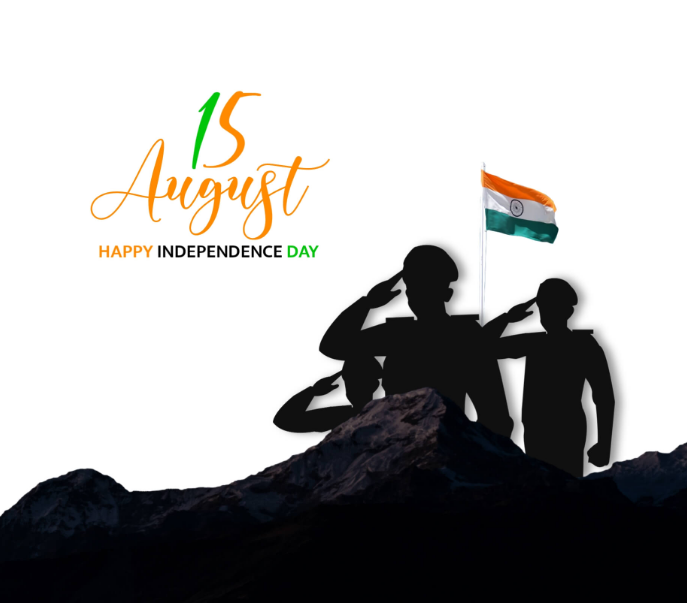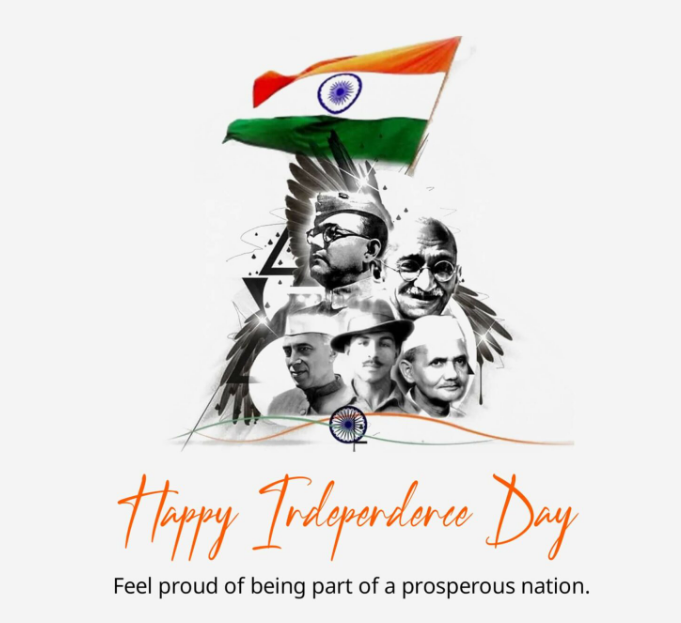‘The History of India’s Independence Day: Remembering 15th August

Introduction
Every year on the 15th of August, India stands united in celebration, paying homage to the monumental day when the shackles of colonial rule were finally broken. India’s Independence Day is a time for reflection, gratitude, and patriotism, as it marks the culmination of a relentless struggle for freedom that spanned decades. Let’s journey back through time and explore the rich history and significance of this momentous occasion.
The Pre-Independence Era
Colonial Dominion and Cultural Suppression
The saga of India’s battle for independence traces its origins to the 17th century, when the British East India Company established its foothold in the subcontinent. Gradually, what started as a trading enterprise transformed into a domineering colonial power, imposing its will on India’s governance, economy, and society. The suppression of native culture and the exploitation of resources cast a long shadow over the nation.
Awakening and Empowerment
The late 1800s witnessed the emergence of social and political movements aimed at challenging British rule. Leaders like Mahatma Gandhi, with his philosophy of nonviolent resistance, ignited the flame of national consciousness. Indian National Congress, founded in 1885, became a platform for demanding political representation and civil rights, laying the foundation for a united struggle against oppression.

The Struggle for Independence
The Gandhian Era
Mahatma Gandhi’s methods of satyagraha, or nonviolent resistance, proved to be a formidable weapon against the British regime. From the iconic Salt March to the Quit India Movement, his leadership galvanized millions to stand against injustice. The spirit of unity displayed during these movements resonated deeply with the Indian populace.

Sacrifices and Determination
The path to freedom was paved with sacrifices and hardships. Brave individuals like Bhagat Singh, Sukhdev, and Rajguru willingly embraced martyrdom for the sake of their motherland. Their stories continue to inspire generations, highlighting the unwavering resolve that characterized the struggle for independence.
The Dawn of Independence
The Mountbatten Plan and Division
As World War II drew to a close, the British realized the futility of continued control over India. In 1947, Lord Mountbatten’s efforts led to the partition of the subcontinent into India and Pakistan. The midnight of August 15 saw the Indian tricolor unfurled, symbolizing the end of colonial rule and the birth of a sovereign nation.
Post-Independence Progress
Nation-Building Endeavors
Post-independence, India embarked on a journey of nation-building. The framers of the Indian Constitution, under the leadership of Dr. B.R. Ambedkar, envisioned a democratic and inclusive society. Policies promoting education, land reforms, and rural development aimed to uplift the marginalized sections of society.
Technological Advancements and Global Recognition
In the following decades, India achieved significant progress in various fields. The Green Revolution transformed agriculture, ensuring food security for millions. The country’s prowess in space technology was demonstrated through successful missions like Chandrayaan and Mangalyaan. Moreover, the information technology boom propelled India onto the global stage.
Celebrating Independence Day
The Red Fort Ceremony
The heart of Independence Day celebrations lies in the Red Fort ceremony. The Prime Minister hoists the national flag and delivers a speech that reflects on the nation’s achievements and outlines its future goals. This event is a tribute to the spirit of India’s freedom fighters and a reminder of the nation’s strength in unity.

Cultural Diversity and Unity
Independence Day is not just about political independence; it’s a celebration of India’s rich cultural diversity and unity. Cultural programs and patriotic songs showcase the kaleidoscope of traditions that coexist harmoniously within the nation.

Conclusion
As the years roll by, India’s Independence Day remains a time of profound significance. It encapsulates the struggles, sacrifices, and aspirations of a nation that has journeyed from the darkness of colonial rule to the light of sovereignty. This day serves as a reminder that freedom is hard-won and must be cherished and protected. The story of India’s independence is a tale of resilience, hope, and the power of a united people.
FAQs (Frequently Asked Questions)
When did India gain independence?
India gained independence from British rule on August 15, 1947.
Who were the key leaders in India’s freedom movement?
Mahatma Gandhi, Jawaharlal Nehru, and Subhas Chandra Bose were prominent leaders in the struggle for independence.
What does the Red Fort ceremony symbolize?
The Red Fort ceremony symbolizes the unfurling of the national flag by the Prime Minister and reflects on the nation’s achievements.
How did India progress post-independence? And Why is Independence Day important to Indians?
India made strides in areas like education, technology, agriculture, and space exploration. And Independence Day is a reminder of the nation’s history, sacrifices, and the unity that led to its freedom.”

